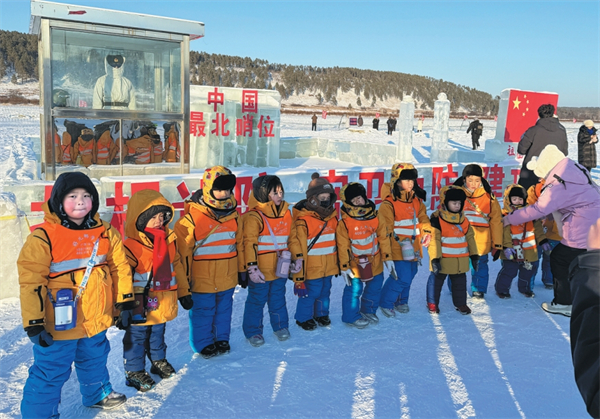Home>Civilization progress
Harbin issues plan to become 'City of Livability and Happiness'
Updated : 2022-11-21
By ( e.my399.com )
The plan fully draws on the direction of sustainable and livable cities from UN-Habitat, and absorbs the concepts and practices of promoting urban construction and development in East China’s Shanghai city and Zhejiang province.
According to the plan, Harbin aims to boost its economy by expanding industry, optimizing the business environment, expanding employment and entrepreneurship, increasing incomes, and stabilizing prices.
Meanwhile, the city also plans to improve infrastructure construction, implement traffic flow projects, remediate urban environment chaos, improve road maintenance mechanisms, and refine its urban management techniques.
Also, Harbin will strengthen ecological protection and restoration, accelerate green and low-carbon cycle development, and improve the urban park system in a bid to improve its ecological environment.
What’s more, with the goal of improving people's livelihoods and well-being, Harbin will improve the housing security system, education and teaching system, social security system and pension service system, as well as develop its health care system and strengthen its communication system.
Elsewhere, Harbin aims to shape the city's characteristic culture by improving society, improving public cultural services, and developing modern cultural industries.
Additionally, the city will seek to improve its epidemic prevention and control system, food and drug safety system, and grassroots governance, as well as increase production safety and build a disaster relief emergency support system.
Over the past five years, Harbin's economic strength increased significantly.
From 2017 to 2021, the city's GDP grew by an average of 4.2 percent annually, and the average annual per capita disposable income of urban and rural residents increased by 5.2 percent and 8.3 percent, respectively.

Harbin ramps up childcare services
A new comprehensive service center for childcare in Harbin is expected to be finished by the end of the year.
-
Talent policies drive enterprise development in Harbin
Harbin's "30 New Talent Policies" represents an iterative upgrade to the talent policy system, helping attract and retain talent to bolster economic and social development.
-
Official website of 2025 Asian Winter Games goes live
Harbin, the host city of the 9th Asian Winter Games, has announced that the official website for the 2025 event has recently gone live.
-
Harbin launches measures to facilitate more foreign trade
In the first three quarters of 2023, the total import and export value of Heilongjiang province's goods trade hit 218.22 billion yuan.





